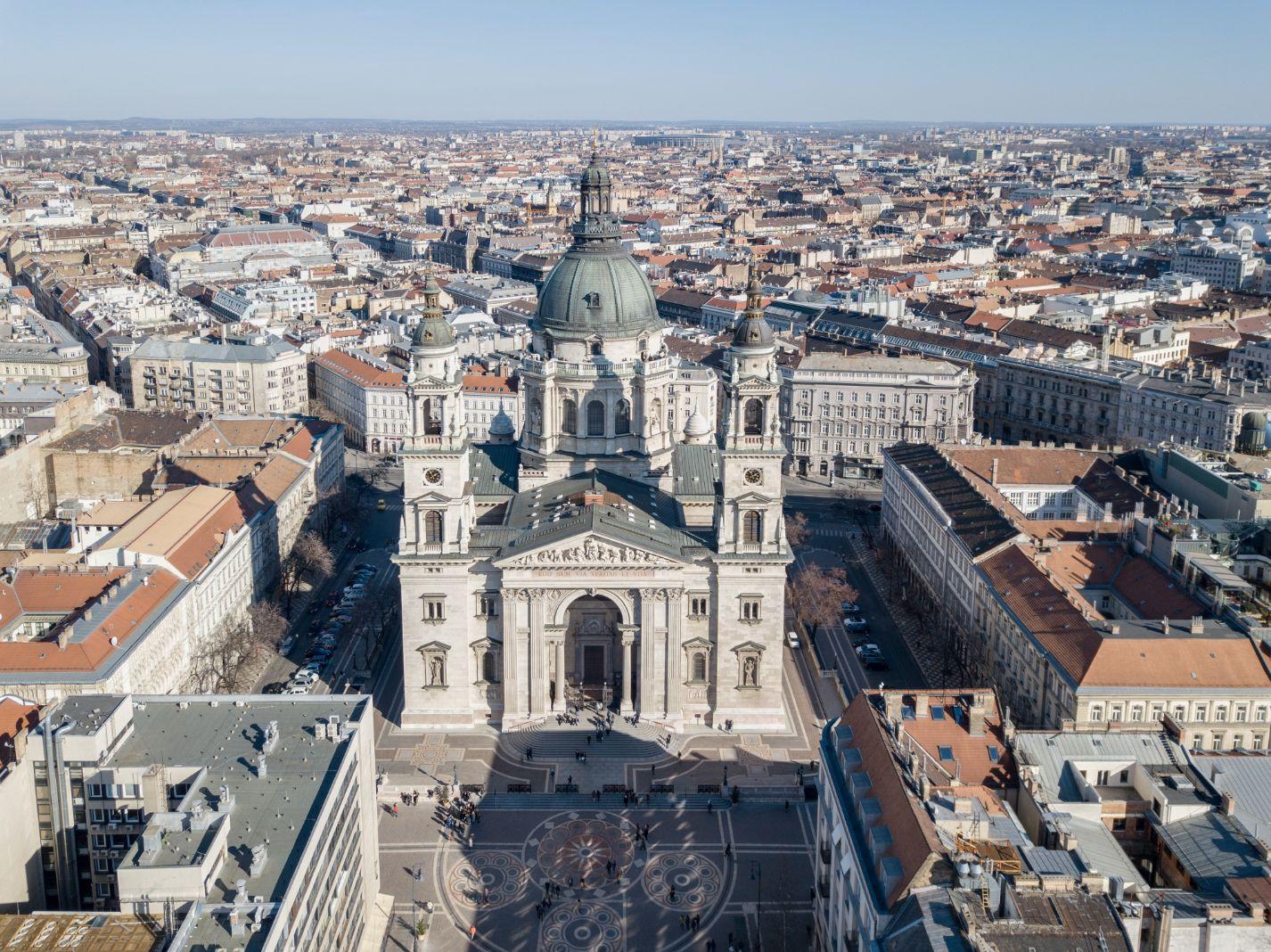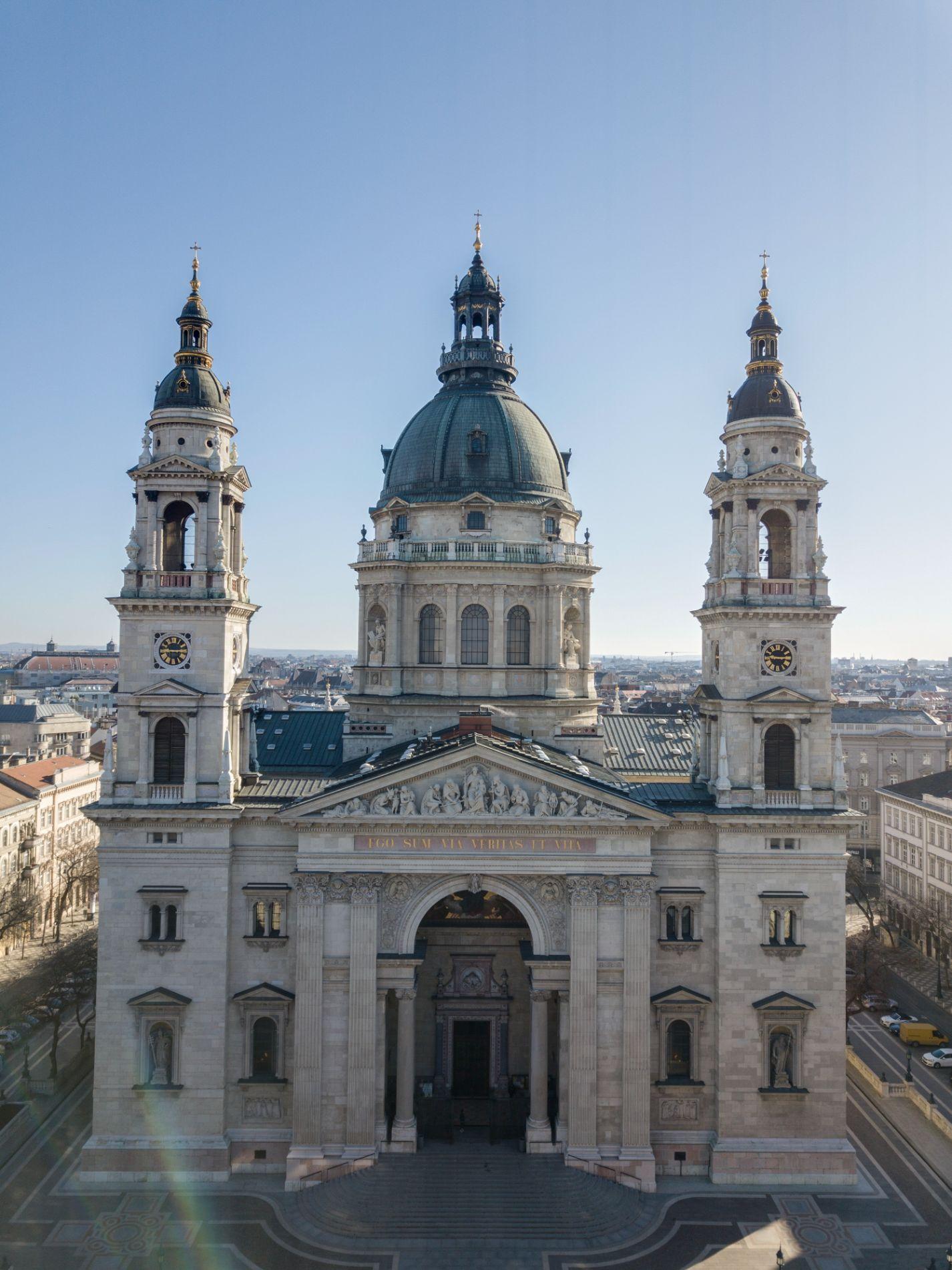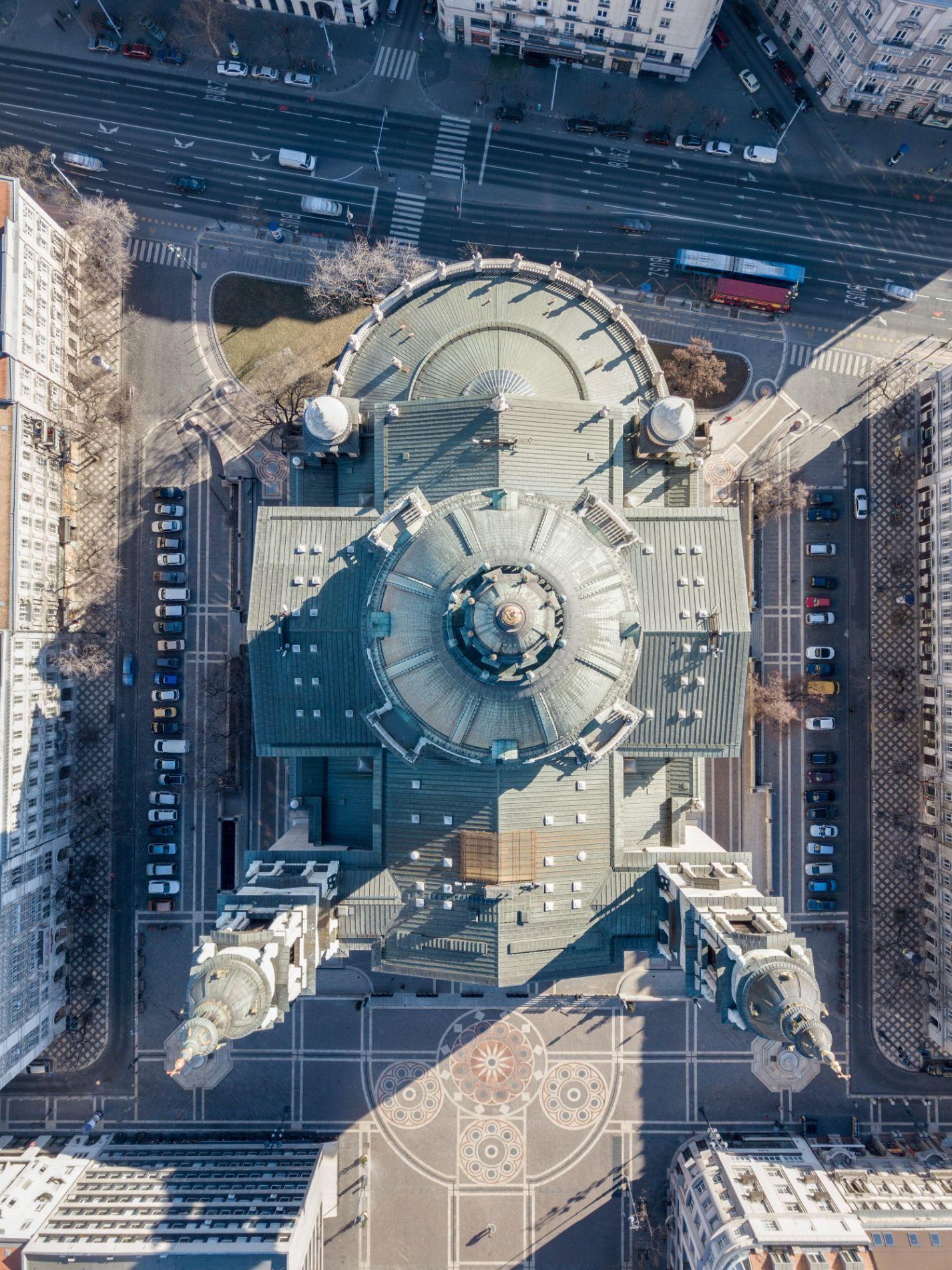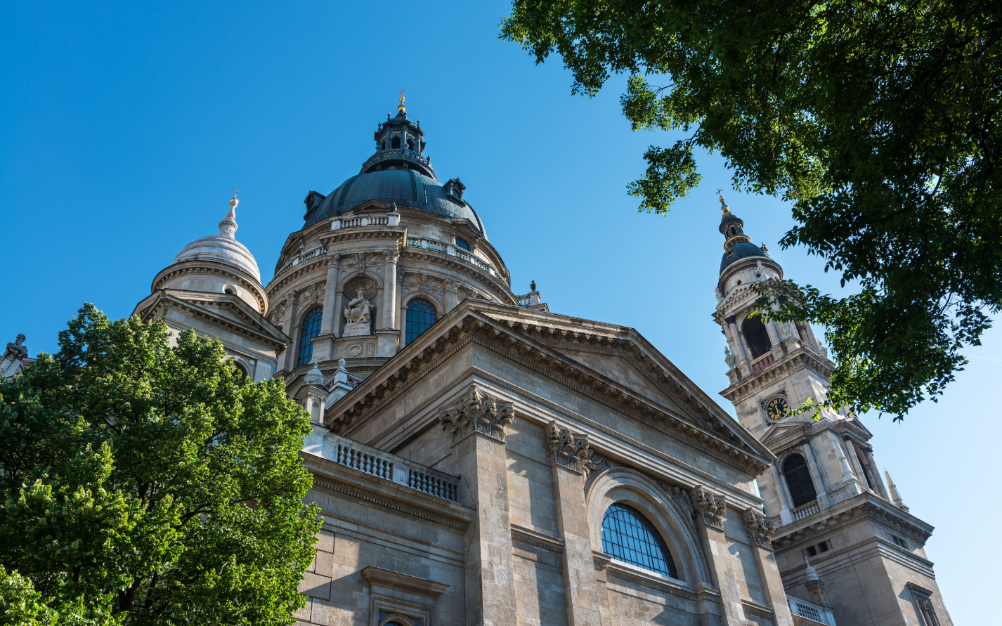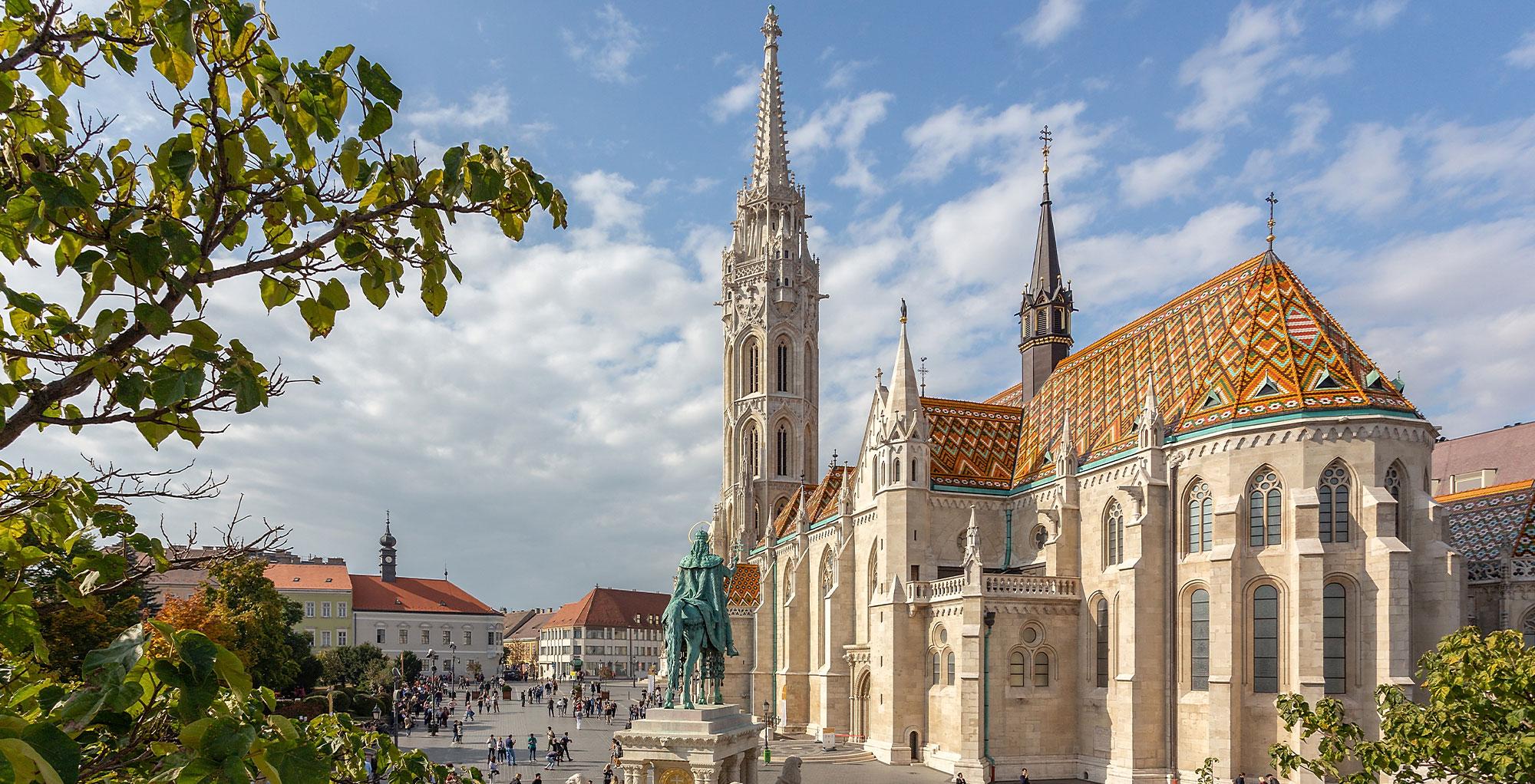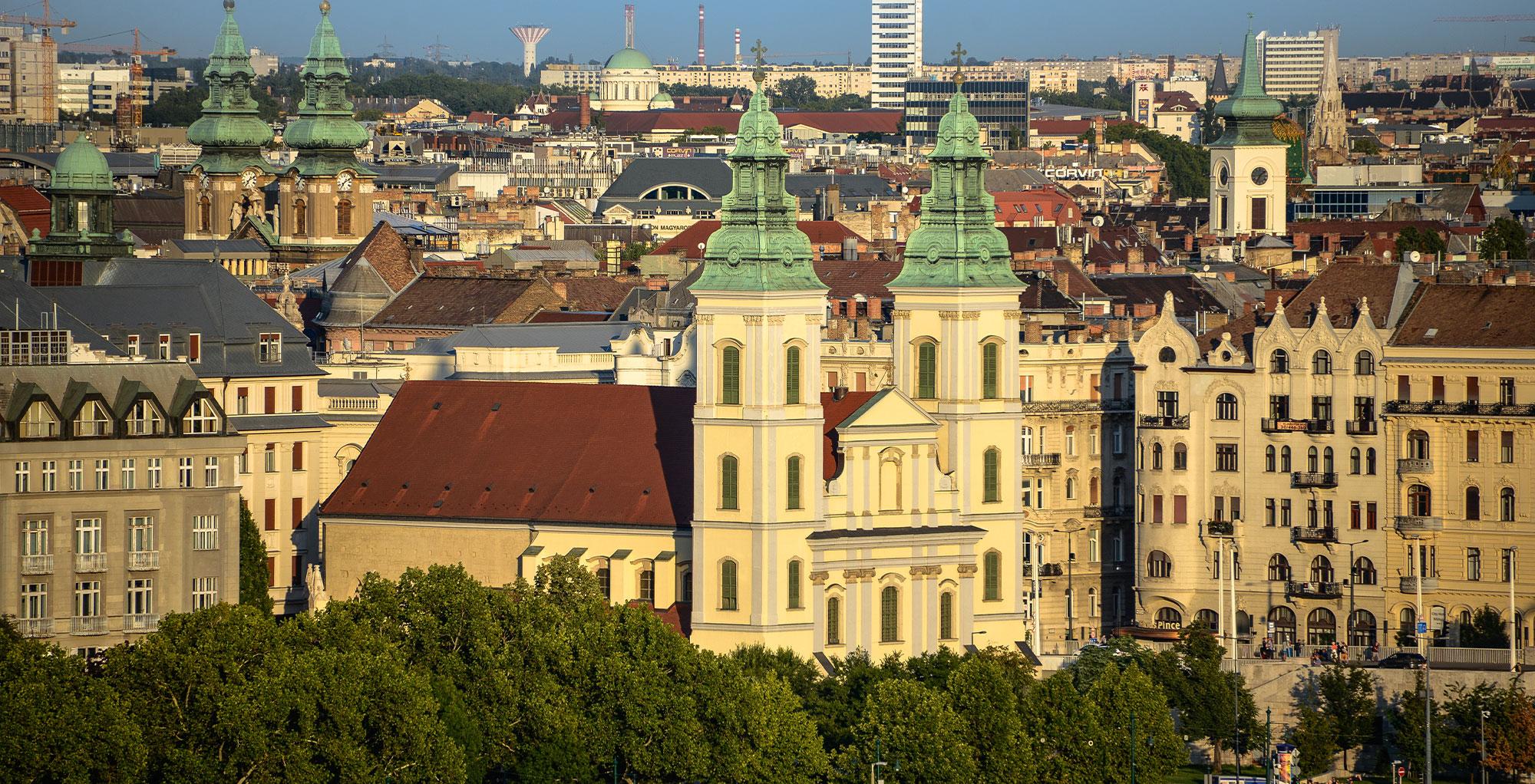The basilica, which is the largest Roman Catholic church in our capital, was built in 1851 in the neoclassical style of the time, based on the plans of József Hild. However, a year after his death, the large dome collapsed due to poor quality building materials and faulty construction. The construction was continued by Miklós Ybl, who not only corrected the faults of the design, but also rethought the whole church in the spirit of the Renaissance. It was consecrated in 1905, and later the keystone was placed in the presence of the Emperor Franz Joseph I.
The 20th century put the building to the test: first the siege of Budapest caused major damage to it, then the dome was burnt down during restoration works, and in the early 1980s a strong storm blew off the sheet metal covering elements of it. After twenty years of renovation, by 2003 not only the building had been restored, but all the church's artefacts, mosaics, paintings, sculptures and stained glass windows had been renovated. A circular skylight was added to the dome, and the building also received new decorative lighting. For more than ten years, a Christmas fair has been held in the square in front of the basilica during the Advent season, and at that time of the year the façade is decorated with special light paintings in the evenings.
Mosaics, stained glass windows, chandelier with a time capsule
But if you are passing by, don't just look at the church from the outside! Step inside and see how the ceiling and dome of the basilica are ornamented with beautiful glass windows and mosaics instead of frescoes. The larger of these were commissioned from the Salviati firm, which also decorated the St. Mark's Cathedral in Venice, while the smaller ones are the work of Miksa Róth, who was also the artist creating the decorative windows of the Parliament. The basilica is also very rich in works of art: In addition to the altarpieces by Árpád Feszty and Gyula Benczúr, the interior is decorated by the life-size sculptures by János Fadrusz, Béni Ferenczy and Alajos Strobl, among others.
And if you stop in front of the Chapel of St. Mary, look up at the chandelier made by the master ironsmith Nándor Páder, which had been hiding a time capsule from 1899 for 115 years. The handwritten message, enclosed in a paper cylinder, slipped out of a hollow angel figurine during the chandelier's restoration a few years ago; the few lines of the note contained the names of the chandelier's makers.
Guardian of the Holy Right
Since 1897, the church has borne the name of the first Hungarian king, St. Stephen, who was buried in the basilica of Székesfehérvár in 1038. However, during the subsequent years with struggles for the throne, the mummified right arm, which was said to have miraculous powers, was removed from the tomb, and taken to the basilica treasury. Legend has it that the treasury guard stole the relic from here and hid it on his estate in Bihar, and it was only found in 1084, after King Stephen's canonisation. For a long time the Holy Right was kept in Transylvania, Dalmatia and Vienna, during the World War it was fled to the West, and in 1950 it was entrusted to the parish of the St. Stephen's Basilica in Budapest. The relic is on display at the altar of the Assumption, where it is kept in a glass container, in the safety of a double reliquary.
The first procession with the relic, after World War II was led by Prince Primate József Mindszenty, which is commemorated by his bust to the right of the entrance. But St. Teresa of Calcutta, who visited our country in 1986, also visited the church, met the crowds gathering there and prayed before the Holy Right.
A mass was celebrated here by Pope Pius XI, whose memorial plaque can be seen on the back wall of the Chapel of Mary, and the night before his death, Count Teleki Pál, Prime Minister of Hungary, prayed here at the time of World War II. During his first pastoral visit to Hungary, on 20 August, 1991, Pope St. John Paul II met the sick in this cathedral; his statue and relic are located at the right entrance of the building. But the Dalai Lama has also been here, meeting with the religious leaders of Hungary.
Despite the harsh conditions under which it was built, the basilica has become one of the most beautiful and important ecclesiastical and tourist landmarks in our country. When walking around Saint Stephen Square, it is worth a stop, resting for a while between the benches, then going up to the circular lookout, which is also accessible by lifts, and admiring the extraordinary panorama of our capital.
Did you know?
The St. Stephen's Basilica is the third largest church in Hungary, with a height of 96.3 metres, the same as the Parliament; currently, no building in Budapest can be built taller. Its bells are also huge, with the St. Stephen's bell, the largest bell in the country, weighing 9.250 kilograms, being rung every feast day in the right tower of the church.
Download the free ChurchApp Esztergom-Budapest tour guide app and explore our historic churches and sacral collections! You can also use the app to discover the hidden curiosities of the churches on your own. The app and information are available in six languages.






